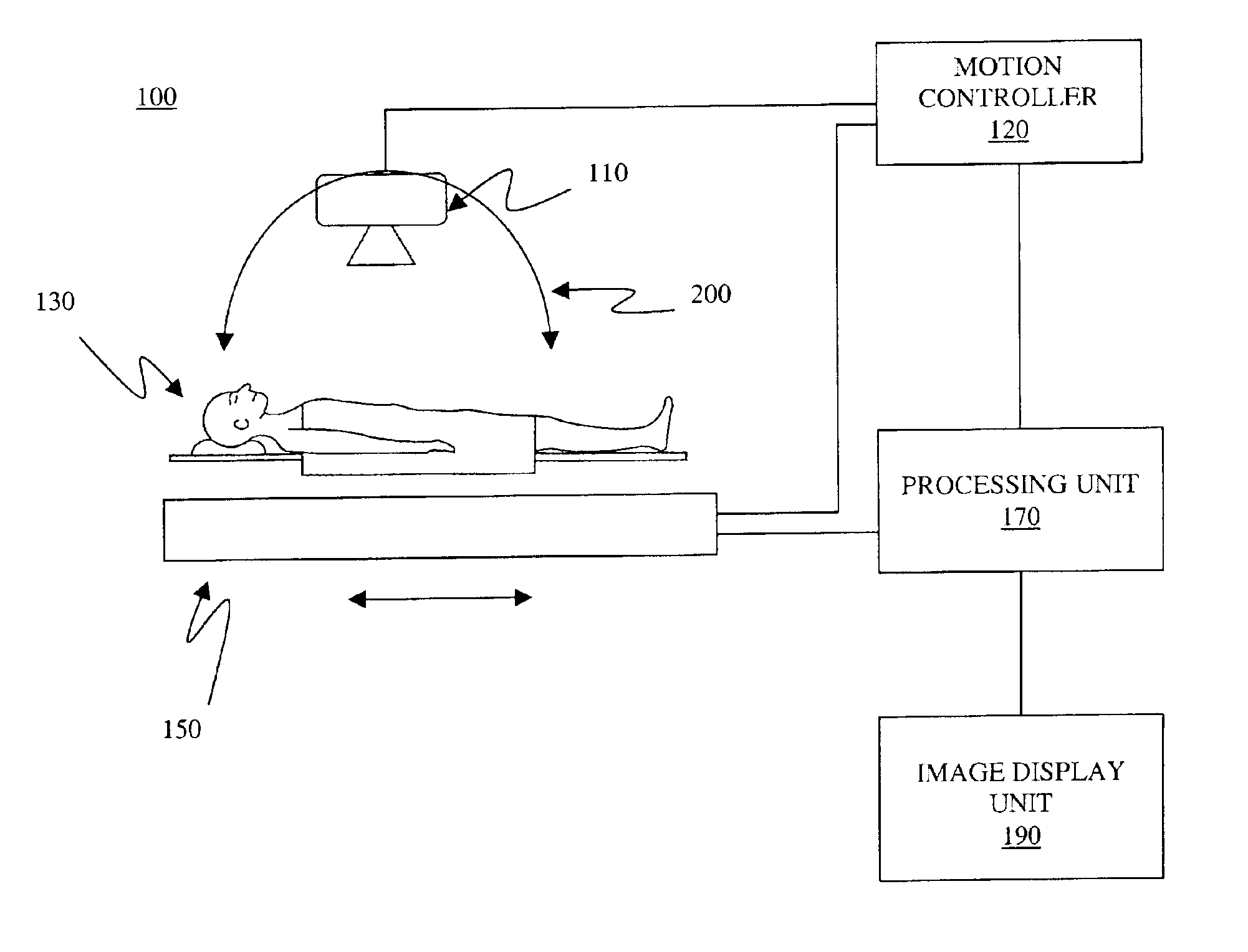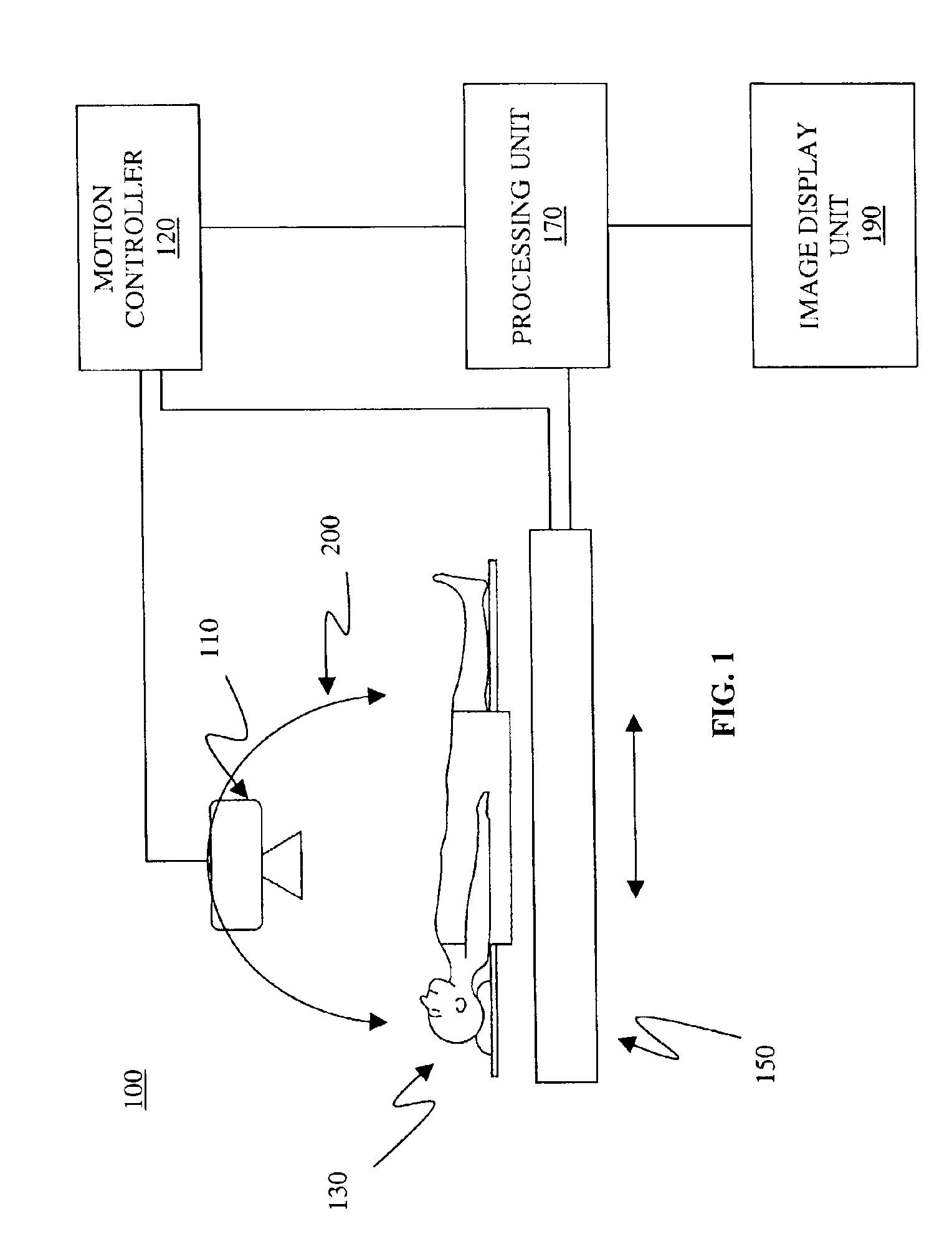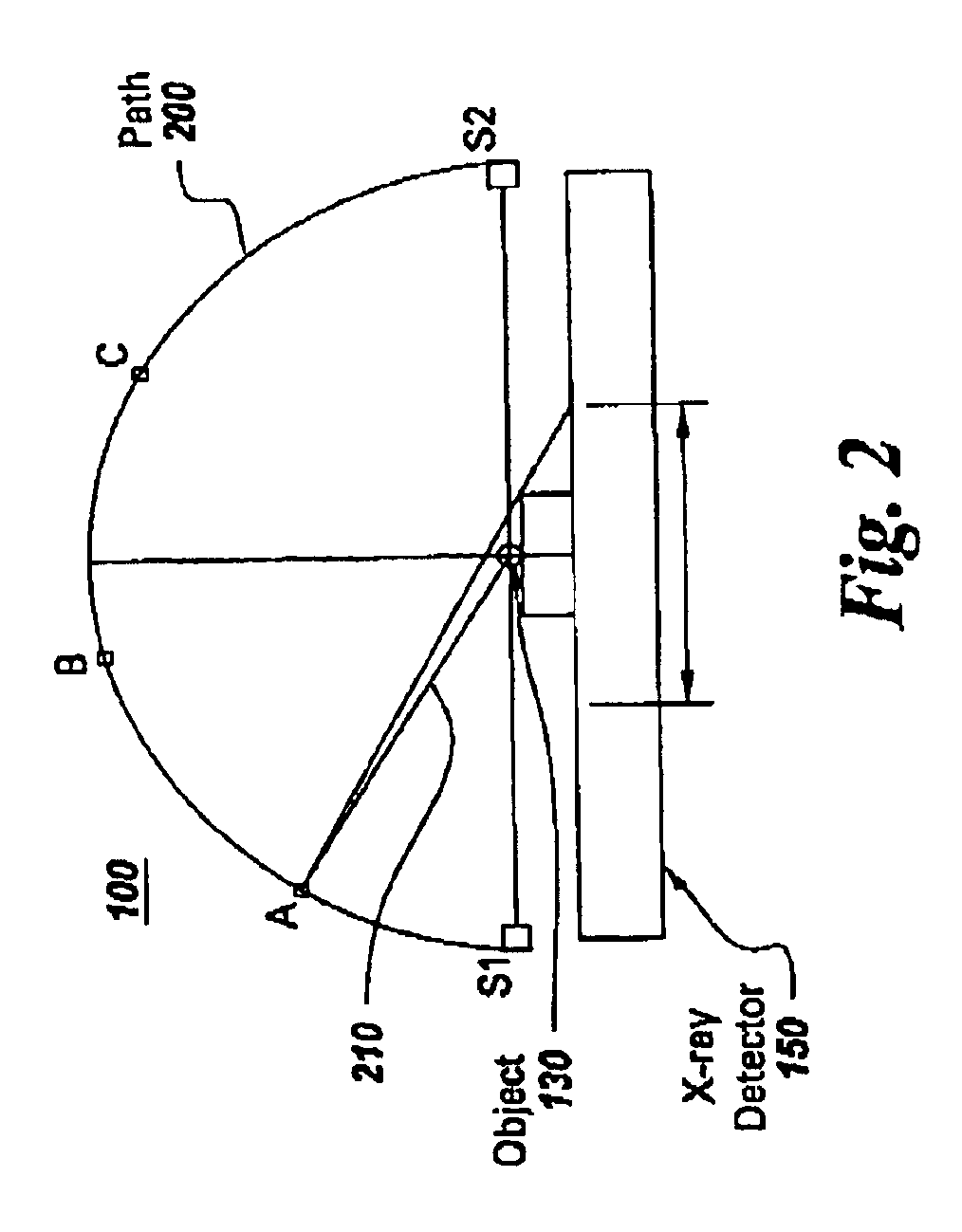Continuous scan tomosynthesis system and method
- Summary
- Abstract
- Description
- Claims
- Application Information
AI Technical Summary
Benefits of technology
Problems solved by technology
Method used
Image
Examples
Embodiment Construction
[0016]As shown in FIG. 1, an imaging system 100 includes an x-ray source 110 coupled to a motion controller 120. A processing unit 170 is coupled between the motion controller 120, x-ray detector 150 and the image display unit 190. It should be appreciated that the processing unit 170 can comprise a microprocessor, central processing unit, a personal computer, a workstation, a mini-computer, a mainframe computer or a supercomputer. It should also be appreciated that the motion controller 120 can be included in the processing unit 170 as software using a command language for movement of the x-ray source 110. It should further be appreciated that the processing unit 170 can be coupled to the motion controller 120, x-ray detector 150 and the image display unit 190 via, for example, a telephone or cable network, an ethernet, a local area network (LAN), or a wide area network (WAN), an integrated services digital network (ISDN), or a digital subscriber line (DSL). It should also be appre...
PUM
 Login to View More
Login to View More Abstract
Description
Claims
Application Information
 Login to View More
Login to View More - R&D
- Intellectual Property
- Life Sciences
- Materials
- Tech Scout
- Unparalleled Data Quality
- Higher Quality Content
- 60% Fewer Hallucinations
Browse by: Latest US Patents, China's latest patents, Technical Efficacy Thesaurus, Application Domain, Technology Topic, Popular Technical Reports.
© 2025 PatSnap. All rights reserved.Legal|Privacy policy|Modern Slavery Act Transparency Statement|Sitemap|About US| Contact US: help@patsnap.com



